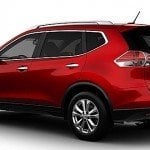The race to bring a self-driving car to market could be getting closer to the finish line. Google, the biggest player on the field in terms of technology, showed off that self-driving technology to reporters this week, though it says a market-ready model is still six years away. Volvo, however, says it will have self-driving cars for sale by 2017.
The Google effort began as a Google X project in 2009. Now they are ready to demonstrate how far it has come, and various auto writers who went to Google headquarters in California to go for a test drive have described the experience. All say that what struck them most was the ordinariness of the ride in the specially modified Lexus SUVs. While test drivers sat in the driver’s seats, the cars drove themselves, and did so with a precision and rigid attention to road safety that one writer likened to riding with a driving instructor. The cars accelerated briskly, stopped at all red lights and slowed for cross-walks. The cars even swerved to give extra space to cyclists and larger vehicles on the road.
The cars drive themselves using a combination of stored information based on previous driving, and precise maps of the area where they are operating, including every traffic signal and sign. A Global Positioning System (GPS) tells the vehicle approximately where it is, and that positioning is further refined by roof-mounted laser sensor equipment that sees 360 degrees. Position sensors in the wheel hub, orientation sensors inside the car, and radar for detecting the speed and distance of vehicles ahead make up the main technology. All of the data are processed to create a detailed map of where the vehicle is in real time. To deal with the more intangible aspects of driving, such as anticipating what other drivers will do in any given situation, the Google cars rely on a combination of past experience, signals, and probability theory.
So far the Google cars are enabled for driving on about 3,500 kilometres of road that have been thoroughly mapped. This is the challenge the engineers now face: to expand that range so that the cars can drive anywhere. They have not yet been tested in snowy conditions, and driving in the rain is also problematic.
One of the justifications for the autonomous car is safety. According to Google, self-driving cars would reduce the number of fatalities due to driver-caused accidents by 90 per cent. With approximately 33,000 auto accident deaths in the US each year, that would be a very significant achievement. The Google fleet of two dozen autonomous cars has had no accidents or collisions so far after test drives amounting to 700,000 miles (1.12 million kilometres). For its part, Volvo is intent on introducing accident-free cars to market by the year 2020.
Meanwhile, though Volvo says it can have its autonomous cars on the road in Sweden by 2017, those cars will be capable of Level 3 autonomous driving, which is the ability to drive by itself. Volvo already manufactures cars equipped with all the laser, radar and other sensing gear needed for autonomous driving. Its City Safety technology, consisting of a forward-facing camera, laser scanner and radar system, was designed to assist drivers. It warns drivers and automatically brakes or steers away from a collision. Taking it to the next level, which is the ultimate goal, could take years. Level 4 autonomous driving allows the “driver” to simply tell the car where to go then sit back and enjoy the ride.
































